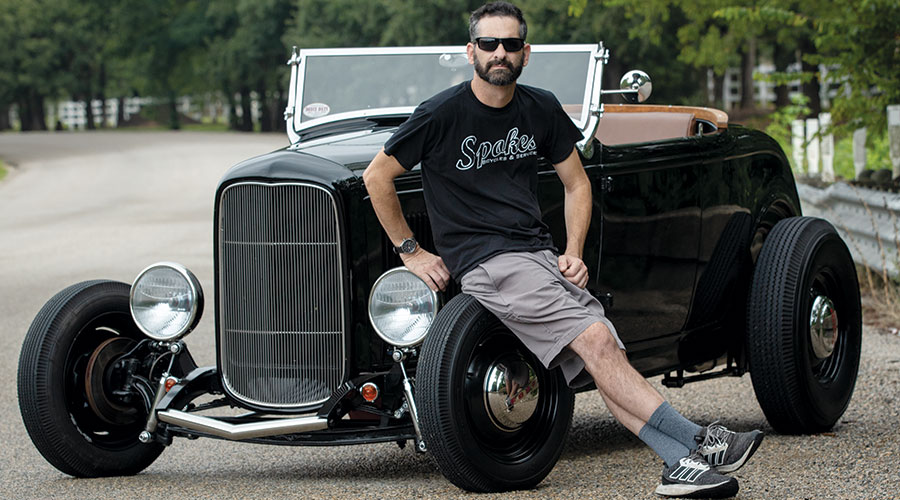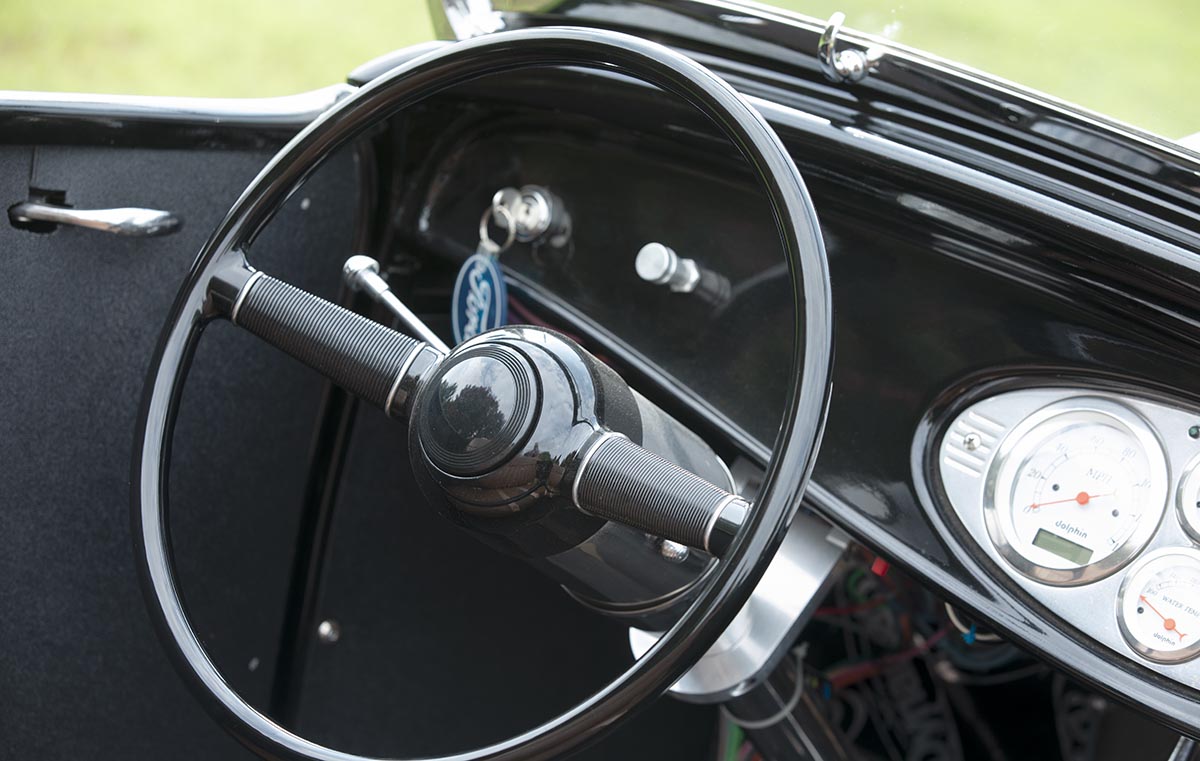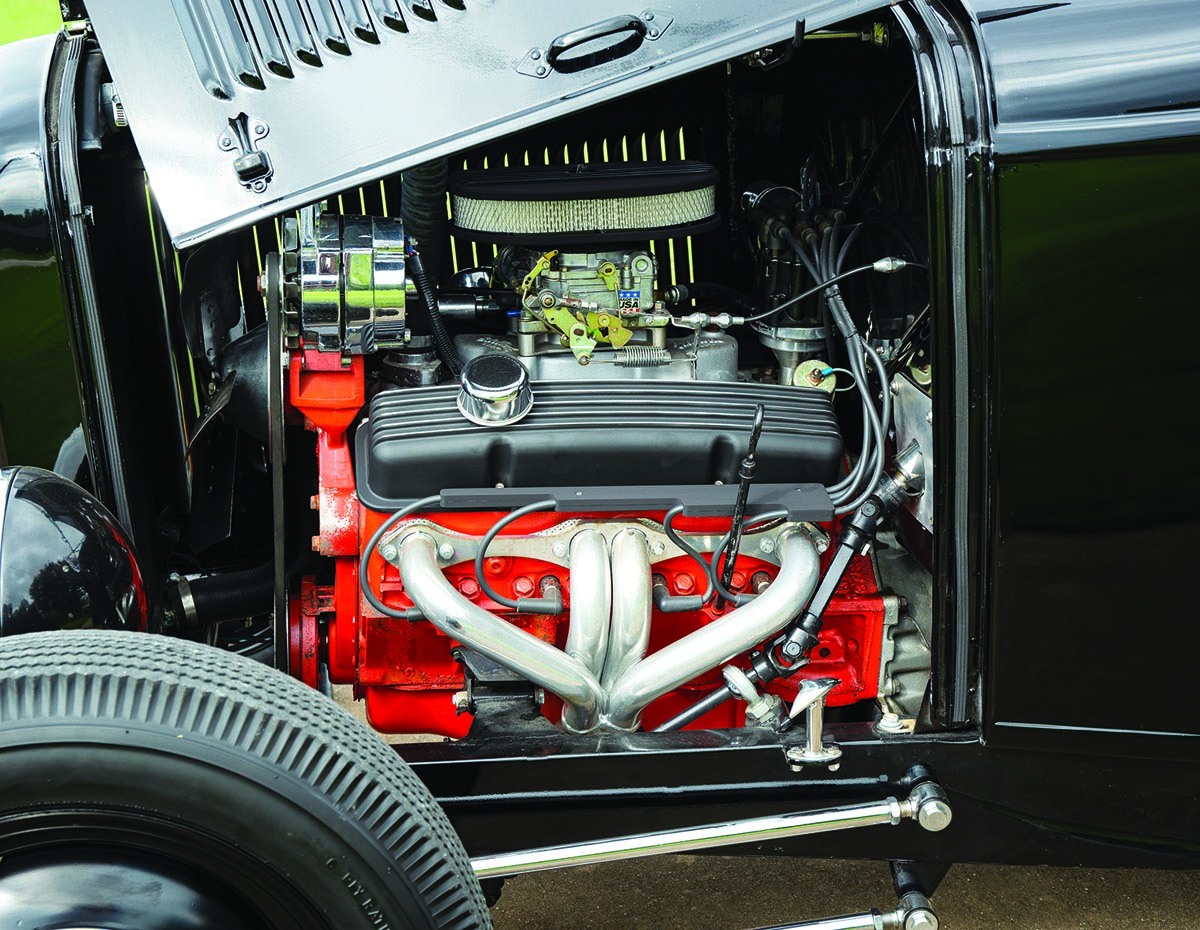
Couped Up
By Meda Kessler
Photos by Ralph Lauer
Time in his garage working on any car is time well spent for enthusiast Dave Garrett. This 1932 Ford is no exception.
Bicycles were Dave Garrett’s first love, but he always has been into anything with wheels.
“I started racing bikes when I was 5; BMX was the coolest thing on the planet,” says Garrett, who owns Spokes Bicycles & Service in Burleson. “But when I crashed and busted my lip, my mom said no more.”
Garrett found other things to occupy his curiosity, including tinkering with cars. “My dad was a mechanic and when I was 10, he became an automotive teacher. I lived in the tech shop and learned so much from him and his friends. I wanted to take everything apart and make it better.”
As a teenager, he got his wish. He and his father found a VW pickup in a field with the engine in the truck bed. They were able to purchase it, get it up and running and then sell it. They did the same thing with a Beetle. At 16, his dad let Garrett pick out his own project car. He chose a 1983 GTI. “As soon as I got my license, I drove my mom crazy begging her to let me drive her everywhere.”
Garrett’s love of VWs continues today as he buys a handful of Beetles a year, strips them down, builds them back up and then sells them. “I often see some of my work at VW shows,” he says. Today, his inventory is low but one of his favorites is a rare 1954 Beetle that someone had turned into a race car. On given weekends, you’ll find Garrett with fellow thrill-seekers — “We like vehicles that leak oil and smell bad, unlike the kids, who prefer air conditioning” — at a 1/8-mile drag strip. “Our cars might not look nice, but the engines are incredible. Our motto is: We look pro, go slow.”
You’re probably wondering why we’re talking so much about VWs when the automobile shown here is clearly not of German heritage. That’s because a car-loving friend tipped us off to Garrett’s latest project, a replica 1932 Ford deuce coupe, considered the definitive hot rod. While purists might turn up their nose at the fiberglass body, these reproductions — along with modifications such as stripping off those big, flared fenders — are common and accepted by hot-rod enthusiasts.
Garrett saw the potential in the car and knew he could make it better inside and out. “A friend had built this one, but he passed away last year and his wife wanted to sell it. I just couldn’t pass it up. I was into old Fords as much as old VWs. My grandfather worked in a Ford factory, building airplanes.”
The car had been sitting awhile, so Garrett got to work on the body and engine. He started with a Pete & Jakes chassis — pretty much considered the gold standard for hot-rod parts — and went from there. “I added chrome and changed the headlights to the traditional oversize ones. I also wanted old-school tires for more of a 1950s look. The steering wheel is from a 1940s Ford.” The tire combination of big and tall in the back and little and skinny in the front is a classic street-rod look.
Under the steel folding hood is a small-block Chevy engine with an automatic transmission.
He takes the coupe out for a drive before our photo session, and it looks really sharp on the road.
The to-do list is still a lengthy one to get the car to where Garrett wants it: a redo of the upholstery and interior, classic pinstriping on the wheels and more engine detailing.
But it’s something he looks forward to. “Being in the garage, getting my hands dirty and bringing a car back to life or making it better, is my idea of a good time.”






